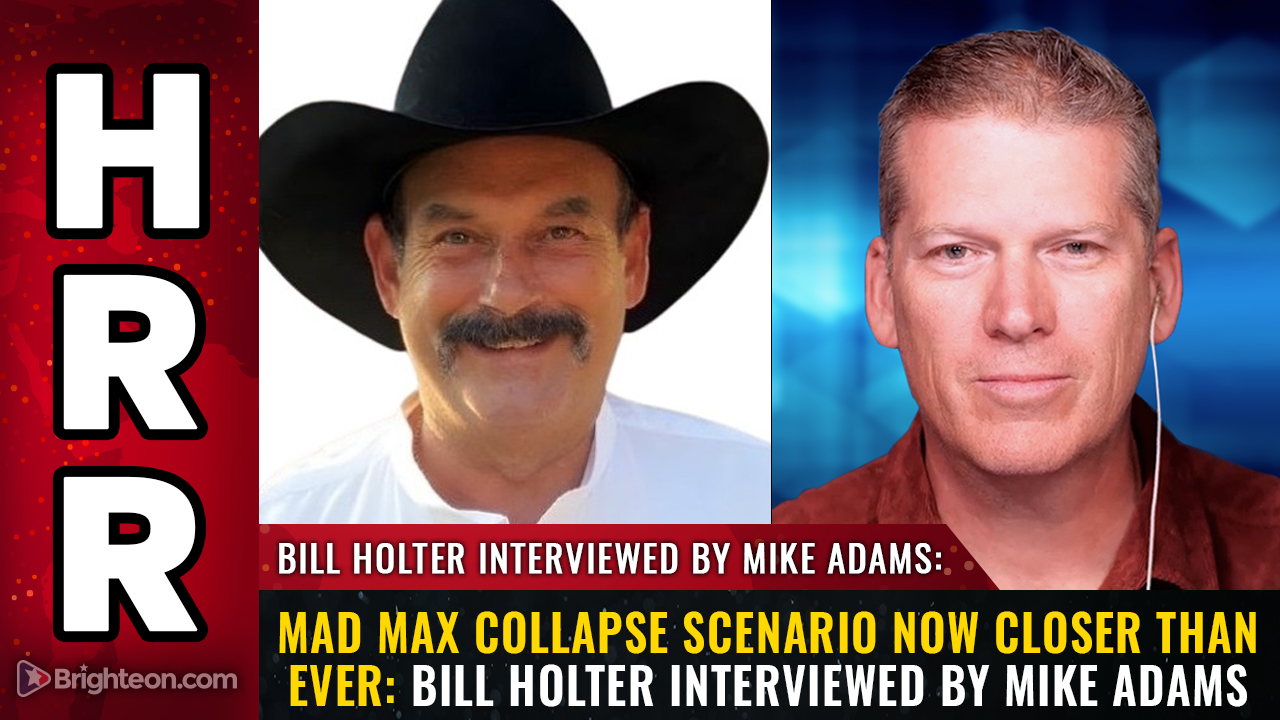U.S. jobless claims fall for sixth straight week, hitting three-month low
07/27/2025 / By Laura Harris

- First-time unemployment claims fell for the sixth straight week to 217,000, the lowest since April, signaling continued resilience in the labor market.
- Despite strong headline numbers, private-sector job growth has slowed significantly, with only 74,000 jobs added in June, prompting concerns of a gradual labor market cooling.
- The number of people receiving ongoing unemployment benefits rose slightly to 1.955 million, staying above 1.9 million for the ninth week, suggesting challenges in re-employment.
- Fed Gov. Chris Waller pointed to weakening job growth beneath the surface as justification for a potential interest rate cut, even as inflation remains near the target.
- While unemployment rates were largely stable across the U.S., economists and investors remain divided, with some warning of rising downside risks despite steady overall job gains.
The number of Americans filing for first-time unemployment benefits fell again in mid-July, marking the sixth straight weekly decline and offering further evidence of a still-resilient labor market.
According to data released Thursday, July 24, by the Department of Labor, initial jobless claims dropped by 4,000 to 217,000 for the week ending July 19. That’s the lowest level since April and below economists’ expectations of 227,000. It also represents a decrease from the previous week’s revised total of 221,000.
The latest figures continue a downward trend that began in late June, when claims had climbed to an eight-month high. Since then, jobless filings have steadily retreated as employers appear reluctant to reduce staffing levels amid continued economic uncertainty. The four-week moving average, which smooths out weekly fluctuations, also declined, falling to 224,500 from 229,500 – a sign of longer-term stability in the job market. (Related: PROPAGANDA: Jobless numbers released by government are statistically impossible.)
However, not all indicators are moving in the same direction.
Continuing jobless claims, which measure the number of people receiving ongoing unemployment benefits, edged up slightly to 1.955 million from 1.951 million the previous week. This marks the ninth consecutive week that continuing claims have stayed above 1.9 million, hovering near a four-year high.
Labor market analysts note that the persistently high continuing claims suggest that while layoffs remain low, those who do lose jobs may be struggling to find new employment quickly.
Meanwhile, claims under a federal unemployment program, an area closely watched by economists for potential signs of public-sector labor market shifts, saw a sharp weekly increase. Filings rose by 193 to 789, a 66 percent jump compared to the same period last year.
But still, the broader takeaway remains positive. The steady decline in initial claims suggests layoffs are not widespread, and that’s a good sign for the overall economy.
Experts warn of labor market softening despite solid jobs data
Headline employment figures continue to paint a picture of stability, but a growing chorus of economists and policymakers cautions that the U.S. labor market is losing momentum beneath the surface.
According to analysts at JPMorgan Chase, the slowdown, combined with the fact that roughly half of June’s job gains came from state and local government hiring, points to a gradually weakening job market. Chris Waller, a member of the Federal Reserve’s Board of Governors, echoed this sentiment – noting that while the labor market appears healthy at first glance, deeper indicators suggest mounting risks.
“While the labor market looks fine on the surface, once we account for expected data revisions, private-sector payroll growth is near stall speed, and other data suggest that the downside risks to the labor market have increased,” he said on July 17. “With inflation near target and the upside risks to inflation limited, we should not wait until the labor market deteriorates before we cut the policy rate.”
Markets are now closely watching the Federal Reserve’s upcoming policy meeting. The CME FedWatch Tool revealed that the central bank is widely expected to hold rates steady at 4.25 percent to 4.5 percent next week, but investors are increasingly betting on a quarter-point cut in September.
Still, not all signs point to immediate concern. New figures from the Bureau of Labor Statistics show that unemployment rates in June held steady in most states, with 47 states and the District of Columbia seeing no change, while only two states experienced declines and one saw an uptick.
In short, the mixed signals complicate the Fed’s decision-making. On one hand, the economy continues to grow and add jobs. On the other hand, key indicators, including weakening private-sector hiring and slowing wage growth, suggest the labor market’s strength may be fading.
Learn more about the state of the American economy at Bubble.news.
Watch this episode of the “Health Ranger Report” as Mike Adams, the Health Ranger, is joined by Dave Hodges, who warns about the coming financial collapse in America.
This video is from the Health Ranger Report channel on Brighteon.com.
More related stories:
Jobless claims soar to five-month high as recession signals blare.
Recession fears surge as new job creation slows down, jobless claims rise.
Jobless claims surge to highest level in 6 months as employers cut jobs due to weakening economy.
Sources include:
Submit a correction >>
Tagged Under:
Bubble, chaos, Collapse, economics, economy, finance, Inflation, job market, jobs, market crash, money supply, progress, recession, risk, unemployment, unemployment claims
This article may contain statements that reflect the opinion of the author
RECENT NEWS & ARTICLES
COPYRIGHT © 2017 BUBBLE NEWS



















